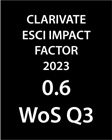Lock-ins in the development strategies of major Hungarian cities
DOI:
https://doi.org/10.17649/TET.39.2.3611Keywords:
urban sustainability, lock-in, urban developmentAbstract
Scientific activity on urban sustainability goes back several decades, while contemporary urban research is carried out in an interdisciplinary framework in both the Hungarian and international scientific communities. One of the most intensively analyzed areas is currently focused on climate vulnerability assessment, paying particular attention to the internal characteristics of urban areas and a specific focus on their social and economic subsystems. This topic is expanded by examining long-term path dependencies, the so-called lock-in effects, which focus on the difficult-to-change potential of urban development goals and interventions. In this study, we analyzed the sub-goals of sustainable urban development strategies for the cities of Debrecen, Győr, Kecskemét, Miskolc, Nyíregyháza, Pécs, Szeged and Székesfehérvár in terms of infrastructural, institutional and behavioral lock-in effects. Moreover, our findings were compared to a previously published study focusing on heatwave sensitivity and the adaptive capacity of selected cities. Our results show that local decision-makers in cities where a high negative lock-in potential is associated with high sensitivity or low adaptive capacity should pay increased attention to the implementation phase of strategies. The applied methodology contributes to widening the methodological background of the qualitative strategic analyses while providing a solution for policy-makers that allows ex-ante assessments to be carried out.
Downloads
Published
How to Cite
Issue
Section
License
Copyright (c) 2025 Buzási Attila, Beszedics-Jäger Bettina Szimonetta

This work is licensed under a Creative Commons Attribution 4.0 International License.
Authors wishing to publish in the journal accept the terms and conditions detailed in the LICENSING TERMS.






